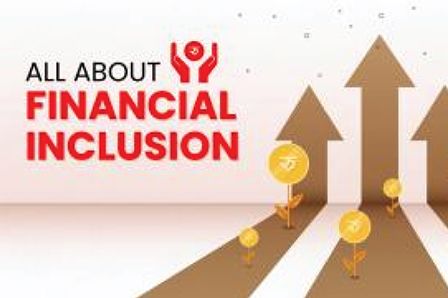
It is important to ensure every individual is provided with an opportunity to utilize their financial earnings not just for the purpose of saving it but also investing it in the right kind of investment tools.
Are you Financially Included?
It is important for every individual and community to examine whether they are financially included or not as it will have impact on their overall financial being. An individual or a community is considered to be financially included, if and only if they have proper access to financial services which enables them to save money, invest it in a profitable manner, send or receive money and also apply for lending facilities.
Digital Financial Inclusion:
With digitization taking over the banking and financial industry, the need to be digitally financially included has gained the utmost importance. The use of the latest tools and technologies in the financial sector indeed has made financial services much more accessible and convenient but at the same time, ensuring those services are accessible to every individual irrespective of their social or financial status holds utmost importance. Digital financial services include mobile money, online banking, electronic payments, and other fintech services which has the potential to reach even those excluded before digitization took over.
Financial Inclusion Initiatives Undertaken by Nepal:
Some of the financial inclusion initiatives undertaken by Nepal are listed below:
- Under The Strategic Plan (2012-2016) enhancing financial inclusion will be identified as a strategic priority.
- The Monitory policy of 2016/2017 focused on deepening financial inclusion through financial literacy and access to financial services.
- It has been made compulsory by the NRB for all financial institutions to make low-cost funds available to MFI which will facilitate access to financial services to underserved areas.
Major Highlights:
- According to data released by World Bank (2015), 25.3% of the adults in Nepal have an account at a financial institution.
- As per UNCDF (2015), 18% of Nepalese adults are excluded financially which means they have no access to financial services.
- 52% of the banked population are men whereas 48 %are women.
- 57% of adults claim to save money whereas 46% claim to borrow.
- The top five sources for taking loans are:
1) Money lenders in the community (21 percent),
2) Banks and MFI’s(10 percent),
3) Co-Operatives (9 percent),
4) Saving groups (8 percent),
5) Family and Near/Dear ones (8 percent).
Despite the efforts undertaken by the fintech companies, government, and communities, the challenges like low financial literacy, inadequate infrastructural facilities, and lack of technological knowledge have significantly impacted achieving financial inclusion goals. For a country like Nepal, financial inclusion should not just be a choice but a necessity for the economic growth of the country.